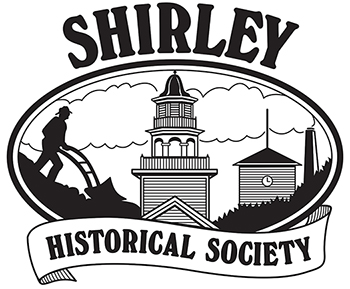Shirley, Massachusetts faces changes, With the closing of Ft. Devens
Author: By Chris Hvoslef, Globe Correspondent
Date: SATURDAY, January 24, 1998
Section: Real Estate
SHIRLEY — Change has become a way of life for the residents of this rural industrial community, situated in the northwesterly part of Middlesex County. Since its infancy in the early 1700s, when the town’s first settlers farmed the land, each century has brought new elements to the town of Shirley, changing its landscape and enriching its heritage. From the late 1700s into the 1800s, many of the town’s early settlers built mills along the fast-moving streams and rivers the town is close to, most notably the Mulpus and Catacoonamaug rivers.
In 1845, the railroad from Boston to Fitchburg opened Shirley up to further development. The town also became home to many industries including a cordage factory and the C.A. Edgarton Suspender Factory which, by 1890, had become the second largest maker of suspenders in the country.
Change came again in the early 1900s when the US government built Ft. Devens on land it bought in the towns of Ayer, Harvard, Lancaster, and Shirley. “That had quite an impact on the town,” said Meredith Marcinkewicz, a resident for almost 30 years and the curator for the Shirley Historical Society. “It brought men from all over the country.”
With the start of a new century on the horizon, and in the aftermath of the closing of Ft. Devens, many residents of the town foresee more change. While many residents anticipated a decrease in the town’s population after Ft. Devens closed, it is actually on the rise as people discover the convenient commute to Boston, via the commuter rail, and Shirley’s affordable house prices.
“People have discovered the towns west of Route 495,” remarked Nancy Holmes, owner of Holmes Real Estate and a resident of Shirley for 35 years. Shirley’s growing reputation as a good community to live and work in has also brought a host of issues to the town that residents will need to address
over the next few years.
“The town is faced with several issues,” said Town Clerk Sylvia Shipton. “We’re talking about closing a landfill and trying to find solutions for that. We’re looking at building new schools or regionalizing. We’re looking at issues regarding a town sewer system. These are very expensive questions for the town. It’s going to be unsettling for awhile.”
Incorporated from a section of Groton in 1753, Shirley was made up of farms that surrounded a triangle-shaped green, known as Shirley Center. The downtown area, Shirley Village, was eventually settled with the coming of the railroad in 1845 and quickly became the town’s industrial and business
area.
Due in part to a revitalization program, several small businesses and industries have moved into the village, settling in the old brick buildings that housed the once-thriving mills and factories.
Many residents are pleased with the school system, although there is some concern that Shirley’s growth will soon mean that the two schools in town, the Center and the Lura A. White schools, will quickly run out of room. According to Marcinkewicz, the town is leasing space on Devens to house
first grade students, who in previous years attended the Lura A. White School.
Sarah Lewis, a resident of Shirley for 11 years and the mother of two students at the Lura A. White School said that most classes have only 17 or 18 students, which helps to provide a more individualized education than can be found at schools with bigger classrooms.
The town has not had its own high school since the 1930s. Currently, students in grades nine through 12 attend high schools in Ayer, Lunenburg, or the Nashoba Valley Technical High School in Westford. The town pays tuition and provides transportation to these schools.
Although house prices have been slowly on the rise over the last few years, buyers can still get a lot of house for their money — if they act fast. “Houses in the median range get swallowed up,” said Holmes. “There’s a great demand for houses in that range. Even new houses being built are often
sold before they’re put up.”
The median home price of $150,000 will buy a new Colonial style house with three bedrooms and one and a half bathrooms on at least one acre of land.
Just beyond Shirley Village is the town’s new Hazen Memorial Library, which opened in August 1997. The library, which cost $1.8 million, is located on a nine-acre parcel of land on the outskirts of the old Ft. Devens property, now known as Devens. There is also a new police station on the same site.
MCI-Shirley, a minimum and medium security prison, is the biggest employer in town. The facility is located on property that was once home to a Shaker community between 1793 and 1908. A maximum security prison is currently under construction on the site and is scheduled to open in the fall.
Shirley at a glance
Incorporated: 1753.
Area: 16 square miles.
Distance from Boston: 39 miles.
Population: 7,463 (includes prison population of about 1,300 inmates).
Registered voters: 2,880.
Tax rate: $14.39.
Median single-family home price: $150,000.
Form of government: Open town meeting; three-member board of selectmen, executive secretary.
Services: Massachusetts Electric; Boston Gas; town water; no town sewer.
Public schools: Center School (k); Lura A. White (1-8); high school students attend schools in
Ayer, Lunenburg, and Westford.
Public transportation: MBTA commuter train.
Houses of worship: one United, one Episcopal, one Baptist, one Catholic church.
Cable TV: Cablevision.
